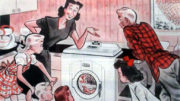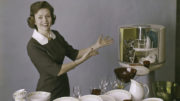 A bronze vessel almost identical to a modern kettle in shape, with a decorated spout, is known from Mesopotamia in 3500 to 2000 BC. It was, however, probably used for filtering rather than for boiling water.
A bronze vessel almost identical to a modern kettle in shape, with a decorated spout, is known from Mesopotamia in 3500 to 2000 BC. It was, however, probably used for filtering rather than for boiling water.
Early kettles would have been made of iron and by the 19th century copper was a common material. Such kettles were heated directly over a fire or stove. The copper version required frequent cleaning as it tarnished each time it was used. The first electric kettle was developed in Chicago in 1891, by the Carpenter Electric Company of the United States. It took twelve minutes to heat the water because the element was in a separate compartment, and not immersed in the water as it is in modern kettles.
In 1922 The Swan company created a kettle which had the element sealed in a metal tube and placed directly in the water chamber unlike the slow boiling electric jugs previously produced. This faster design caught on and soon most companies were making kettles in this design. Kettles were mainly made from metal with bakelite handles and lids gaining popularity during the 1930s, during the second world war several ceramic designs that featured bakelite lids were produced due to the shortage of metal products. these stayed popular for many years and in 1956 Russell Hobbs produced the first fully automatic kettle bring the kettle into the modern age.
Today it would be hard to find an new electric kettle that was not automatic and the trend of plastic type kettles is fast being replaced by retro style chrome designs.




